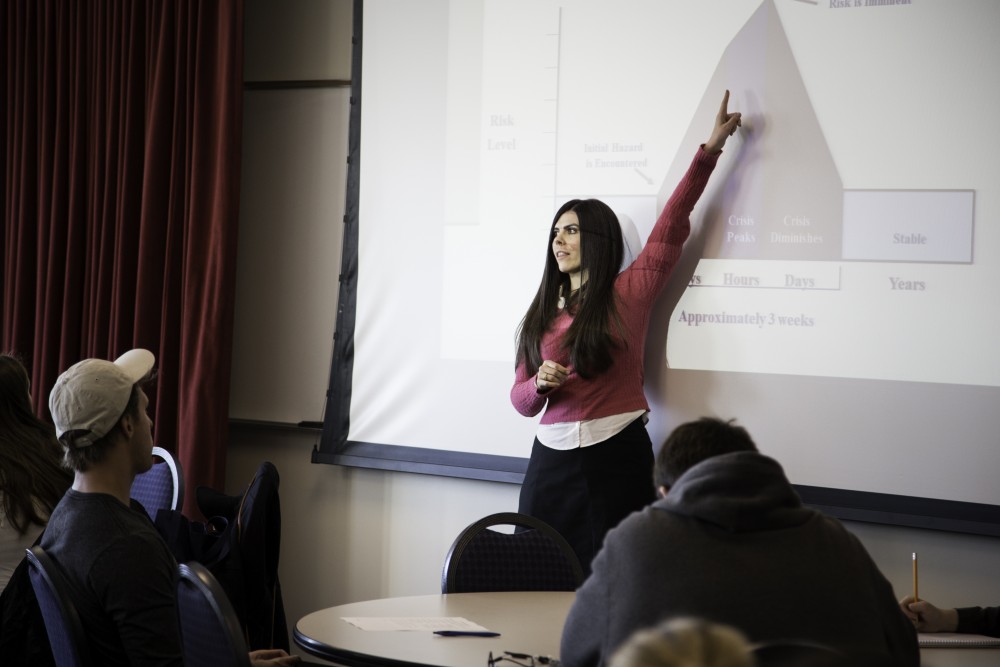Identifying and preventing suicide

GVL/Spencer Miller Melissa Selby – Theut
Mar 16, 2015
More than 20 Grand Valley State University students learned how to identify and prevent a suicidal crisis on Thursday, March 12.
Melissa Shelby-Theut, therapist and coordinator of Outreach and Peer Education at the GVSU Counseling Center, taught students how to utilize the Question, Persuade and Refer (QPR) technique.
She said QPR is an extremely effective method. It is not counseling or treatment, but it is instead intended to offer hope through positive action.
As of 2010, there are 105 suicides per day in America, Shelby-Theut said. Suicide is the 10th leading cause of death for the population and the third leading cause of death for college students.
There are a multitude of factors that can lead to suicide. Biological makeup, the season and race all play an important role in the cause of a suicide crisis. Additionally, elderly white men are the most likely people to commit suicide.
Eighty-three percent of African American suicides are male. However, African American women have the highest level of resilience.
Shelby-Theut said that while men are more likely to commit suicide, women attempt suicide four times more than men do. This is because women use less lethal means of suicide than men do.
“The reason women use less lethal means when trying to commit suicide is that women report wanting to be found pretty when they are dead,” Shelby-Theut said.
She thought it was important for students to understand the background causes of suicide so they comprehend its magnitude. All of these background factors have an effect, but they need a trigger: the loss of a job, the end of a relationship, a poor grade. However, even at this stage, many people do not enter a suicide crisis. This is because hope is still in the way.
Hope is the main protective factor when it comes to suicide. Along with things like pets, friends, family and a significant other, hope acts as a key defense between the life and death of a person going through crisis.
“If we pull out hope, the wall crumbles and suicide is imminent,” Shelby-Theut said. “Hope is at the center of preventing suicide.”
Hope is so important that it is at the center of the QPR prevention system, she added. QPR is meant to help one reinstate hope into a friend or loved one who may be going through a suicide crisis.
The first step of QPR involves questioning. Shelby-Theut said this is quite simple: ask the person if they have thought about committing suicide. It is important to be persistent and ask in a private setting, but do not let the person in crisis dismiss you.
Once there is an understanding that a suicide is possible, the next step is persuading them to get help. Shelby-Theut said it is important to listen to the issue, but there is no confidentiality. This is a moment of crisis, and you need to help this person get help.
Asking questions like “Will you go with me to get help?” or “Will you call the Counseling Center with me?” can help the situation.
Finally, you need to ensure people get help. This is the refer aspect of QPR. Even if the person disagrees, it is your mission to help them find safety.
“For a student who is living on campus, there is never a moment of the day that someone has to sit in a suicidal crisis without the help of a professional,” Shelby-Theut said.
For more information, contact the Counseling Center at (616) 331-3266. If the Counseling Center is closed, contact an resident assistant or residence life grad assistant. In an emergency, call 911 or GVPD at (616) 331-3255.





















